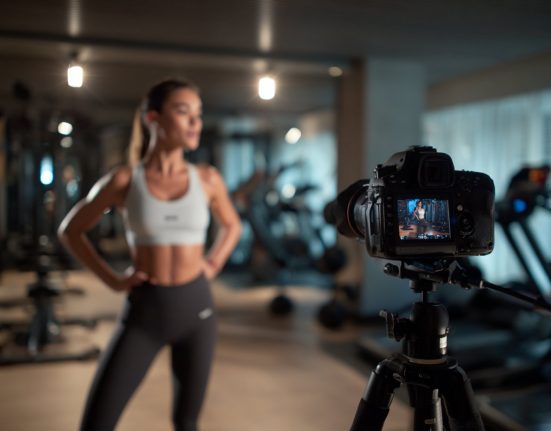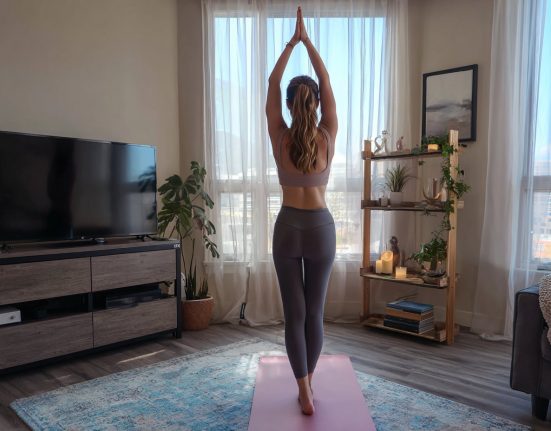Cardio tends to dominate most conversations about getting lean and healthy. But don’t underestimate the power of strength training, which is essential for women 50 and over to foster longevity and vitality.
Strength exercises play a vital role in maintaining muscle mass, bone density, and overall physical function. It may also help improve mood, energy levels, and confidence, among other perks.
Read on to learn why strength training is key to healthy aging and discover the best exercises to incorporate into your workout routine.
Why Strength Training Exercises Matter for Women Over 50
“Strength training is the gift that keeps on giving,” says Judy Arazoza, CPT, a personal trainer in New York City who specializes in working with women over 40. “It uses a fair amount of energy during the workout, and it also consumes a significant amount of energy for several hours during the recovery phase.”
That’s because strength training burns calories and builds energy-hungry muscle mass. Muscle itself burns calories each day at rest, but it burns a lot more when being used, says Natalie Wieneroider, CPT, a personal trainer and GetSetUp guide who teaches fitness classes to older adults in Melbourne, Australia.
So, the more muscle you have, the greater your overall calorie burn becomes. This is helpful for any woman over 50 who’s trying to stay lean.
And science backs this up: A systematic review and meta-analysis of 54 studies found that healthy adults who lifted weights for at least four weeks lowered body fat percentage by 1.46 percent when compared with their nonexercising counterparts.
To help you get started, Stephanie Carter Kelley, PhD, a board-certified orthopedic physical therapist and yoga instructor in West Lafayette, Ohio, shares seven strength exercises below.
Also, note that you don’t need to wait until you turn 50 to do these muscle-building moves. And you don’t need to be a woman to give them a try; everyone can benefit from these exercises.
In fact, the sooner you incorporate them into your routine, the better — but it’s never too late to start.
How to Incorporate Strength Training Into Workouts
With proper form and dedication, these muscle-building moves will have you feeling strong, lean, and powerful in no time. Here are a quick tips to get started with the exercises below:
Opt for a Total-Body Approach
Combine these lower body, upper body, and core exercises to target your full body for maximum strength-building benefits. Perform 8 to 12 reps and one to two sets of each exercise (including both sides, if applicable) using a challenging but manageable weight or your body weight.
Aim for Consistency
“Strength training should be done a minimum of two times each week to obtain benefits,” Dr. Carter Kelley says. Lift for at least 30 minutes per session, and focus on exercises that hit the major muscle groups — chest, back, shoulders, arms, abdominals, hips, thighs, and calves — for the most efficient workout
1: Dumbbell Goblet Squat
1 to 2 sets; 8 to 12 reps
- Stand with your feet hip-width apart, toes pointed forward. Hold one end of the dumbbell with both hands by your chest.
- Bend your knees and push your hips back and down until your thighs are parallel to the ground or as low as you can comfortably go. Keep your torso upright and knees in line with your toes, not caving inward or bowing out.
- Pause briefly, then press your feet into the ground to stand back up.
Benefits: Squats train the large muscles of your thighs and glutes, which help you walk, climb stairs, and lift heavy objects with greater ease.
Working large muscle groups also releases a hormone called brain-derived neurotrophic growth factor (BDNF), Carter Kelley says. This hormone plays a key role in the growth and development of brain cells, which is critical for learning and memory, according to the U.S. National Library of Medicine. “Therefore, this exercise helps women mentally as much as physically,” she adds.
Variations:
- If you’re not ready for the dumbbell, start with body weight squats.
- You can also try squatting with a bench or chair behind you if you need a safety net. Gently tap your glutes to the bench before standing back up.
- If that’s too difficult or you feel pain when you squat, Carter Kelley recommends stacking a yoga block or some pillows on the bench or chair to shorten your range of motion.
2: Body Weight Split Squat
1 to 2 sets; 8 to 12 reps on each leg
- To set up the ideal position for the split squat, begin by kneeling on the floor on one knee. Note if your front knee is at a 90-degree angle. If not, adjust the spacing between your front foot and back knee until your front knee is at a 90-degree angle. Then, press up to stand. This is your starting position.
- Keeping your chest up, bend your knees and lower your hips toward the ground with control.
- Tap your back knee to the floor and pause briefly.
- Push through your front foot to return to the starting position. Repeat until you’ve completed all reps on one leg, then switch sides.
Benefits: Like other squat variations, the body weight split squat targets your glutes, quadriceps, hamstrings, and core. Because this is a single-leg exercise, it also improves balance — a big bonus to support everyday life activities.
Variations:
- If tapping your back knee to the floor is too intense, shorten your range of motion and simply dip your knee as far as you can.
- Struggle with balance? Set a chair in front of you and lightly grip the back for added stability.
3: Supported Bent-Over Row
1 to 2 sets; 8 to 12 reps with each arm
- Stand in front of a bench or chair.
- Grip a dumbbell in your left hand and hinge forward to place your right palm on the bench or chair. Make sure your left hand is directly under your shoulder. Keep your core braced and back flat.
- Let your left arm hang toward the floor and hold the dumbbell with your palm facing in.
- Keeping your back flat and hips square to the floor, row the dumbbell up toward your chest. Stop once your elbow goes just past your rib cage.
- Pause briefly before lowering the dumbbell back down toward the floor.
- Repeat until you’ve completed all reps on one side, then switch sides.
Benefits: Rows strengthen your arms, shoulders, and mid-back. This helps prevent the dreaded “slump” from sitting at a computer all day, Carter Kelley says. Plus, maintaining proper posture helps protect your spine, reduces wear and tear on joints, and eases strain on muscles and ligaments, which is particularly important as bones, muscles, and connective tissues change with age.
Variation:
If your dumbbells are too heavy, swap them out for a resistance band and try this approach:
- Simply stand on the center of the band with one or two feet and grip with both hands.
- Hinge forward at the hips and keep your back flat while you row the band up.
4: Dumbbell Suitcase Carry
1 to 2 sets; 8 to 12 reps on each side
- Stand with your feet hip-width apart and grip a medium or heavy dumbbell in one hand down by your side.
- Brace your core and begin walking. Keep your core engaged. Take controlled steps to prevent your torso from swaying as you walk.
- Continue walking for a set time or distance, or until it becomes difficult to maintain your grip on the weight. Bend your knees to gently set the weight down and repeat on the opposite side.
Benefits: Carry exercises help improve grip strength. Why is that important? Grip strength is a good measure of physical function and may even correlate to mortality risk, Carter Kelley says.
Single-arm carries like this move also build balance, stability, and core strength.
Variations:
- If you have a hard time walking without leaning toward your weighted side, you may need to lighten your load. Grab a lower-weight dumbbell.
- Try a farmer’s carry, which involves carrying a weight in each hand. Doubling the weight may sound tougher, but it’s actually less of a challenge for your core when you’re carrying balanced weight on each side.
5: Dumbbell Floor Press
1 to 2 sets; 8 to 12 reps
- Begin seated on the floor holding a dumbbell on top of each thigh. Use your legs to help lift the dumbbells to your shoulders and carefully lie back until your head and upper back make contact with the floor. Both feet should be flat on the floor.
- Hold the dumbbells at the sides of your chest, palms facing forward.
- Press the dumbbells straight up over your chest.
- Pause briefly, and then slowly lower the dumbbells to the starting position beside your chest. Repeat.
Benefits: This move works major muscles in your upper body — namely, your chest, shoulders, and triceps. Keeping these “push” muscles strong can help with daily activities, like pushing shopping carts and heavy doors. It’s also essential for playing any sport that involves swinging a bat, club, or racket.
Variation:
If you’re not ready to hold weights above your chest, use a resistance band instead:
- From a standing position, step one foot on the center of the band and the other foot forward so you’re in a high lunge position.
- Bring the handles to your shoulders with your palms facing forward, elbows just behind your body. Brace your core and press both arms straight out in front of your chest. Then, pull your elbows back slowly to return to starting position. Repeat.
6: Tug Boat Pose
1 to 2 sets; 8 to 12 reps with each leg
- Lie on your back and engage your abs. Lift both feet off the floor and bend your knees to form a 90-degree angle with your legs. Your shins should be parallel to the floor.
- Keeping your head, neck, and upper back on the floor, extend both arms straight over your chest. Then, lower both arms down toward your ears.
- Without moving your upper body, keep one leg bent while you straighten the other leg.
- Hold briefly before bending your leg again.
- Repeat until you’ve completed all reps on one leg, then switch sides.
Benefits: Carter Kelley recommends this modified version of the classic yoga pose to build abdominal strength. This basic exercise teaches you how to engage your abdominal muscles while breathing, which may support the spine and improve low back pain.
Variation:
- To make it easier, keep one foot firmly planted on the floor.
- Repeat until you’ve completed all reps on one leg, then switch sides.
7: Dumbbell Deadlift
1 to 2 sets; 8 to 12 reps
- Stand with your feet shoulder-width apart. Grip a dumbbell in each hand in front of your thighs, palms facing your body.
- Bend your knees slightly and sit back into your hips.
- Keeping your back flat, hinge forward at the hips to lower the weights toward the floor with control. Stop once you feel a slight pull in your hamstrings.
- Pause briefly, then straighten your torso to return to start. Repeat.
Benefits: This exercise targets the large muscles in the lower back, glutes, and hamstrings. “You need a strong back to lift groceries and gardening equipment, bend over, and more,” Carter Kelley says. Plus, strong back muscles promote bone growth in the spine, which helps prevent osteoporosis, she adds.
Variation:
- If you’re new to deadlifts, start by practicing the movement with a broom, PVC pipe, or another light object. Move on to light dumbbells when you’re ready to experiment with weights.
The Takeaway
- Strength training plays a vital role in healthy aging, particularly for women over 50.
- It supports muscle and bone health, enhances functional movement, and may contribute to improved mood and energy levels.
- Research shows that consistent resistance training can lower body fat and increase metabolic efficiency by building lean muscle mass.
- It’s never too late to start a strength routine. What matters most is building the habit: Aim to incorporate strength training at least twice weekly.









